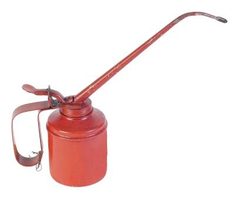The Society of Automotive Engineers (SAE) and International Standards Organization (ISO) have different standards for gear oil. ISO oil grades are identified by their viscosity grade or VG. SAE grade equivalents to ISO grades are approximate, since they are based on viscosity measurements at different temperatures. Gear oil grades can also change with time due to viscosity changes that occur with usage. Gear oil lubricates gears in cars and industrial motor gear boxes.
Things You’ll Need
- SAE grade marked on the container label
- viscometer
- thermometer
Steps
-
Look for indications that the oil is multi-grade. Refer to the SAE grade marked on the container label. SAE grades identified by a number and then letter are multi-grade oils. SAE 5W-30 and SAE 10W-30 are multi-grade oils. SAE gear lube grade 80W-90 is equivalent to ISO grade 100.
-
Identify whether the oil is intended for use in crank cases or to lubricate gears. ISO VG grade 22 is equivalent to SAE crankcase oil grade 5W. ISO VG grade 86 is equal to SAE crank case oil grade 20W. ISO VG grade 100 is equivalent to SAE crankcase grade 30. The highest SAE crankcase oil grade is 60, which is equal to ISO VG grade 320. ISO grade 46 is equivalent to SAE gear lube grade 75W. ISO viscosity grade 68 is equivalent to SAE 20. ISO grade 220 is equal to SAE gear lube 90. ISO grade 460 is equivalent to SAE gear lube grade 460.
-
Measure the viscosity with a viscometer if the conditions are far from the original test conditions on which the SAE or ISO grades are determined. SAE oil grades are determined by oil viscosity at 100 degree Celsius. You can verify extremely hot and cold temperatures with a thermometer. Extreme temperatures can result in very different viscosity than is standard for the grade. Gear oil grades can also change with time due to chemical changes that occur with usage. Directly measure the viscosity to determine the correct ISO grade in either of these cases.
-
Convert the measured viscosity to the ISO viscosity to determine the correct grade. SAE oil viscosity measurements are in Centipoise, abbreviated to cP. Centipoise are equal to 1 milliPascal per second or mPA*s. ISO viscosity grades are measured in centistokes, abbreviated as cST and measured in millimeters squared per second. Fortunately, Centipoise and Centistokes have a one-to-one ratio. If the SAE viscosity is measured in Pascal-seconds, divide the SAE viscosity by 1,000 to get the value in Centisokes.
Tips & Warnings
- According to “Fluid Mechanics” by Frank Kreith, “ISO viscosity grade 32 and the equivalent SAE 10W are most widely used industrially.”
- “Petroleum Fuels Manufacturing Handbook” by Surinder Parkash states: “The classification is based on a series of viscosity grades, each being approximately 50 percent more viscous than the preceding grade”. Viscosity variation within ISO oil grades is plus or minus 10 percent.
- SAE oil grades are independent of the American Gear Manufacturers Association (AGMA) gear oil standards. AGMA lubricant number one is equivalent to ISO grade 46, while AGMA number 8A is equivalent to ISO grade 1000.
